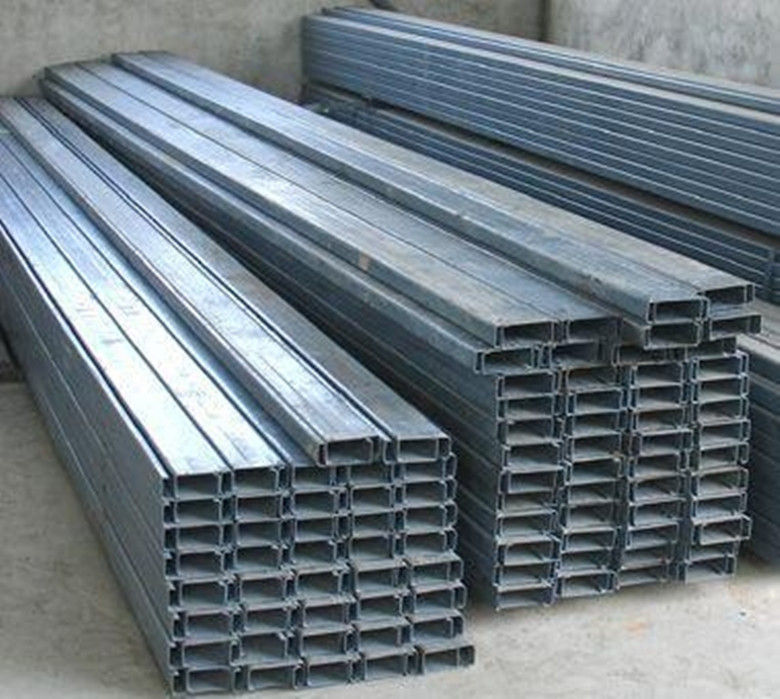Galvanised steel
Contents |
[edit] Introduction
Galvanisation can be used to help prevent steel from corroding. This involves coating steel in zinc. The coating of zinc prevents corrosive substances from reaching the base metal. The zinc also acts as a sacrificial anode, meaning that if the coating is scratched, the remaining zinc will still protect the exposed steel.
The most common method of galvanising steel is hot-dip galvanisation, which involves submerging the steel in a bath of molten zinc.
This form of protection may be insufficient for components exposed to acids such as acid rain, or in a salt environment, such as coastal locations, and for these applications, stainless steel is preferable.
See Stainless steel v galvanised steel for more information.
[edit] Process of galvanisation
The typical process of galvanisation is described below.
[edit] Degreasing
To begin, the steel must be treated and cleaned to remove any scale, rust, oil, paint or other surface contaminants.
[edit] Fluxing
The steel is then immersed in a flux solution. This is usually 30% zinc ammonium chloride with wetting agents, maintained at above 65°C. This helps to prevent further oxidation before the galvanising begins. The steel is then dried.
[edit] Galvanising
The steel is completely immersed in a bath of molten zinc. A uniform coating is produced by the zinc reacting with the steel to form a series of zinc-iron alloy layers. The mass of the steel component being protected will determine the thickness of the layers.
The component is removed from the bath after a period of immersion which varies according to the size and mass. The steel will carry with it an outer layer of molten zinc which solidifies upon cooling to form the outer coating.
Small components such as fasteners can be galvanised by a similar process. They are loaded into perforated cylindrical steel baskets and lowered into the bath. Upon removal, they are rotated at high speeds for 15-20 seconds in a centrifuge which throws off excess zinc and maintains the integrity of the components.
For more, see Galvanising.
[edit] Advantages of galvanised steel
There are several advantages to using galvanised steel:
- It can be more cost-effective than other protective coatings for steel.
- It has good durability and requires little maintenance.
- It has a life expectancy of more than 50 years in rural environments, and 20-25 years in more extreme urban and coastal environments.
- By fully immersing the component in zinc every part is protected, including recesses, sharp corners and inaccessible areas.
- Galvanised coatings are easily assessed by the eye.
[edit] Disadvantages of galvanised steel
Some components may be too large or too small (e.g. small screws and bolts) to be hot-dipped.
The zinc will eventually be corroded; the rate being largely dependent on the thickness of the coating and the environment to which it is exposed.
There is also the risk that the outer zinc layer can scratched, or can peel away if components are cooled too slowly. A very thick coat of zinc can also become brittle and flake off.
[edit] Related articles on Designing Buildings
- Aluminium.
- Cast iron.
- Concrete-steel composite structures.
- Concrete vs. steel.
- Galvanising.
- Major cast metal components.
- Metal fabrication.
- Metal roofing.
- Rust.
- Spangle.
- Stainless steel.
- Stainless steel vs. galvanised steel.
- Structural steelwork.
- Super-strength steel structures.
- Types of metal.
- Types of steel.
- Weathering steel.
Featured articles and news
Understanding Mental Health in the Built Environment 2025
Examining the state of mental health in construction, shedding light on levels of stress, anxiety and depression.
The benefits of engaging with insulation manufacturers
When considering ground floor constructions.
Lighting Industry endorses Blueprint for Electrification
The Lighting Industry Association fully supports the ECA Blueprint as a timely, urgent call to action.
BSRIA Sentinel Clerk of Works Training Case Study
Strengthening expertise to enhance service delivery with integrated cutting-edge industry knowledge.
Impact report from the Supply Chain Sustainability School
Free sustainability skills, training and support delivered to thousands of UK companies to help cut carbon.
The Building Safety Forum at the Installershow 2025
With speakers confirmed for 24 June as part of Building Safety Week.
The UK’s largest air pollution campaign.
Future Homes Standard, now includes solar, but what else?
Will the new standard, due to in the Autumn, go far enough in terms of performance ?
BSRIA Briefing: Cleaner Air, Better tomorrow
A look back at issues relating to inside and outside air quality, discussed during the BSRIA briefing in 2023.
Restoring Abbotsford's hothouse
Bringing the writer Walter Scott's garden to life.
Reflections on the spending review with CIAT.
Retired firefighter cycles world to raise Grenfell funds
Leaving on 14 June 2025 Stephen will raise money for youth and schools through the Grenfell Foundation.
Key points for construction at a glance with industry reactions.
Functionality, visibility and sustainability
The simpler approach to specification.
Architects, architecture, buildings, and inspiration in film
The close ties between makers and the movies, with our long list of suggested viewing.
SELECT three-point plan for action issued to MSPs
Call for Scottish regulation, green skills and recognition of electrotechnical industry as part of a manifesto for Scottish Parliamentary elections.
UCEM becomes the University of the Built Environment
Major milestone in its 106-year history, follows recent merger with London School of Architecture (LSE).
Professional practical experience for Architects in training
The long process to transform the nature of education and professional practical experience in the Architecture profession following recent reports.
























